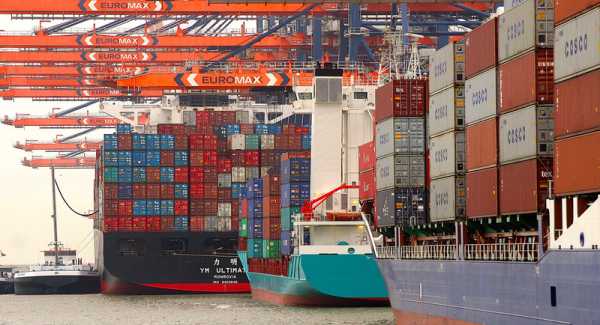
Only four percent of hydrogen produced globally was "green" at the end of 2021 (Photo: Andre Skibinski)
The international governing bodies for shipping and aviation have both set net-zero targets for 2050, so the industry commitment to decarbonise is there.
The International Maritime Organization (IMO) finally introduced this in July.
But we have still seen little in the way of tangible action.
It is unsurprising that the question of how to decarbonise shipping dominated at London International Shipping Week last week, and will be sure to continue at this week’s European Shipping Summit.
We have got the building blocks of what needs to be done in place. We can increase efficiency in both sectors, utilise technologies such as wind propulsion, and directly electrify the shortest journeys.
However, to go beyond incremental change, both sectors need to find alternative fuels to replace fossil fuels — and we urgently need regulation to drive this transition.
Sadly, as of now, the EU is lagging behind where it needs to be, and the production of these alternative fuels is also trailing behind the required pace.
The need for green hydrogen
Enabling the move away from fossil fuels is where hydrogen comes in.
Either used directly as a fuel or used to produce alternative fuels such as e-ammonia, e-methanol or synthetic kerosene, hydrogen is needed for all pathways to truly sustainable fuels for shipping and aviation.
These fuels provide an important route to decarbonisation, but there are significant challenges when it comes to scaling their production.
At the end of 2021, only four percent of hydrogen produced globally was “green”, which describes the lowest emission form of hydrogen produced via electrolysis.
To compound this issue, hydrogen is being put forward as a solution for decarbonising sectors across the economy, from home heating to road transport.
Given the inherent inefficiencies in producing hydrogen, there simply will not be enough available if it is used to decarbonise sectors such as these which have other and more efficient routes to decarbonise.
This all points towards the need for regulation that will not only drive up the supply of green hydrogen, but crucially ensure it, is targeted towards the sectors where it is most needed for decarbonisation.
Maritime and aviation
In the EU, both FuelEU Maritime and ReFuel EU Aviation legislate the use of these fuels in shipping and aviation.
But they need to go further in incentivising hydrogen-derived fuels with the lowest emission reduction potential, instead of also promoting fuels, which simply produce lower emissions than existing fossil fuels.
Take aviation, where ReFuelEU Aviation requires 70 percent of aviation fuels to be ‘sustainable aviation fuels’ by 2050.
However, under this headline figure, it only requires 35 percent of the fuel mix to comprise synthetic fuels (like e-kerosene or those made from green hydrogen) by the same year.
Sign up for EUobserver’s daily newsletter
All the stories we publish, sent at 7.30 AM.
By signing up, you agree to our Terms of Use and Privacy Policy.
And for shipping, despite waiting years for the IMO to act, FuelEU Maritime falls short of the targets set by the IMO by only calling for an 80 percent reduction in the greenhouse gas intensity of fuels used by the sector by 2050.
This means that both regulations will still allow for the use of fuels that are not truly sustainable.
These include biofuels in the case of aviation and liquid natural gas (LNG) for shipping — which will not be enough to achieve the emission reduction targets they have set themselves for these sectors.
Herein lies the green hydrogen gap: regulations such as ReFuel EU Aviation and FuelEU Maritime are not incentivising the lowest emission fuels — leading to a lack of demand signal for hydrogen-derived fuels and their production lagging behind where it needs to be.
First-mover companies such as Maersk are ready to move to vessels powered by new fuels but are still unsure whether there will be enough fuel for these ships to run on.
So how do we plug this green hydrogen gap?
For a start, we need to see regulations strengthened to show that there will be significant demand for hydrogen-derived fuels in shipping and aviation over alternative ‘sustainable’ fuels.
Regulation must also ensure that supplies of green hydrogen are prioritised for use in sectors where there aren’t other, more efficient routes to decarbonisation.
And importantly, there must be further interrogation into what the EU can do to lead in the production of these fuels.
The United States’ Inflation Reduction Act (IRA) means that we are likely to see the first hydrogen-derived fuels for aviation produced and used in the US.
The EU must now question what it can do to rival the US for leadership in producing these fuels.
The year 2050 might seem a long way off, but a wholesale shift away from fossil fuels for shipping and aviation won’t come quickly. Action needs to be taken now — or we may well miss the boat.
Source: euobserver.com



